#and it really really sucks because for lack of a better term legend of zelda is my roman empire
Explore tagged Tumblr posts
Text
tbh TOTK just felt like fanfic in game format with all the inconsistencies with pre-established info from the other games :(
so guess what they released more interviews and i think given what a writing shitshow totk was and what they have been saying in all these interviews is actually painting a really bad picture; i dont have the time, nor the energy to go over every detail
but they were commenting on people wanting the more linear format back and aonuma himself basically said that he thinks people who feel like that do so only bc of nostalgia and "Why do you want to go back to a type of game where you're more limited or more restricted in the types of things or ways you can play?"
what .. the fuck, more freedom DOESNT automatically mean better??? like ... restriction can be a GOOD thing just as tooo much freedom can be BAD?? like in totk??? are you fukcing shitting me- what the hell are games even for then, has he had an awakening to the fact that he actually just loves sandbox games without realizing it???? im not playing fucking zelda for a sandbox, especially not when its advertised as a somethign else
its pretty clear that they want to keep this format going with everything they say there, ... maybe it really is over huh
also i hate how they kept talking around answering anything about story/lore; they go asked how ganondorf even connects to ganon since theres nothign about it in game, and all they got out was welllll we dont wanna say anything bc its up to the player; about every question you got the answer of "make somethign up yourself" which is just ... its really clear they dont actually care but dont want to say everything is meaningless actually, so they try to be vague about it and with doing that really just confirm they didnt think about it and they dont care- so no lore actually matters, nothing thats been said or established has any meaning bc they will get rid of it the second it crosses paths with their new -more freedom equals better- philosophy, they say its bc they want you to be "free" to think up anything but apparently dont realize that when there are no rules, no consistent lore or anything that it ROBS it, it stops having meaning, its fun to connect dots only when there are rules you need to work with and dots to connect in the first place, when you have an established world with its restrictions it drives you to think more creatively about things- but when there are no rules?? its fucking boring!! thats what it is!!
when you discard all rules i wont care to get invested into anything bc i know it will not be considered again, be done away with without any reason and wont have influence on coming or previous games ... bc there are no rules, anything is possible and everything can be changed any second, so nothing matters
(they also talked about the many viral videos of those very few dedicated people that make godzilla mechs in totk and how happy they are about that- i get that to some extent, but the way they kept talkign about it really just felt like it confirmed my suspicion that that whole mechanic was mainly implemented to let people do that since that gets shared around en masse making it seem like that is why people enjoy it while neither the game nor the narrative are build around it in any way ..)
it just makes all the time i spend thinking, feeling and theorizing about zelda like a true waste of time, bc nothing matters and there are no rules-
i am someone who greatly enjoys working with and around established lore/rules, its fun to me to recontextulize things by being smart or creative with it all without breaking anything or as little as possible of the established things!
if i wanted to do just do anything i want I COULD HAVE ALREADY DONE THAT bc theres nothing actually stopping anyone to just make up what they want! i DONT need canon to lose all rules for that??!!
maybe ill have to make myself believe the franchise ended with botw on a good note ... ono
#like I get what people are saying with it feeling like DLC bc it didn't really. add much.#but it also felt like some weird au#bc yeah there's a plot#but it feels like it completely ignores the source material#and it really really sucks because for lack of a better term legend of zelda is my roman empire#I think about it daily#but totk doesn't feel like a ZELDA game#y'know?#like its taking me FOREVER to get through Skyward and TP and Wind and OOT#but I'm almost finished with totk after less than like 50 hours and thats even with how distracted I get#its just. it feels so empty both in terms of what's actually around and the plot
376 notes
·
View notes
Text
Kiwi-Le-Survivant’s Best Games of 2017 Post
I bought a PS4 this year, which means I was actually able to play five new games this year. It’s my hope that people will actually enjoy reading my thoughts, and soon I’ll be able to rival The Game Awards and announced Halo 6 or something right in the middle of my posts. Let’s jump right in.
Top 5 Best Games I Played That Came Out In 2017:
5. Tekken 7 - You know, I think I prefer Tekken to Street Fighter now. Although that might be a combination of me being slightly better at the former, coupled with Capcom having no idea what they’re doing lately. As shallow as it sounds, I think a big reason I love this game so much is the novelty of both a Capcom and an SNK character guest starring in a Tekken game.
Not as big on Noctis, though. I was hoping for either Kazuma Kiryu, or another fighting game rep. Although I guess you could argue Noctis represents Dissidia.
It’s at the bottom because the other games are so good. I hope they keep adding more content beyond what’s already planned.
4. Danganronpa v3: Killing Harmony - Apparently opinions on this game are mixed among DR fans, mainly related to the ending. Personally, I liked the ending, and I feel the rest of the game is pretty much in line with the first two in terms of quality. I’m a fan of the new mechanics, like Debate Scrum and Psyche Taxi. The soundtrack is really good, too. I think everyone can at least agree this is a memorable game.
3. Yakuza 0 - I haven’t finished this one yet, but I’m told it’s a fantastic entry point if you want to get into this series. This is one of the few games I can think of where I actually willingly did sidequests, because a lot of them are actually funny, and even heartwarming.
2. Persona 5 - My most anticipated game of 2014, 2015, 2016 and 2017. I’m a big fan of Persona 3 and 4, and I feel this game is just as good, if not better. I greatly prefer the Tokyo setting to the rural setting of Persona 4.
From the art style, to the setting and music, P5 oozes style out of every orifice. In fact, you could make a case for it being one of the most stylish games of all time. I thought for sure it would be number one, but one game managed to top it.
1. NieR: Automata - I heard this game actually sold really well, and that’s great news. Imagine telling someone that the sequel to NieR would outsell the newest Mass Effect. It’s amazing what an extra layer of polish and removing or altering some of the more tedious aspects of the first game can do.
Honestly, I’m bad at explaining why the game is good. Just play it. I genuinely believe it will go down as one of the greatest JRPGs of all time, and that Yoko Taro can and should be thought of as the next Kojima. If you dismiss it as a Metal Gear Rising/Final Fantasy rip-off that relies on fan service, well, your loss.
Did I mention that both NieR games have strong contenders for best video game soundtracks of all time? It’s true.
This is pretty long, so I’ll include the rest of the awards under the read more.
Top 5 Best Games I Played That Came Out Other Years:
5. Kid Icarus: Uprising - I haven’t played this as much as I’d like, but I’ve greatly enjoyed what I have played. I don’t even really mind the controls, really. I haven’t used the stand yet.
4. Gravity Rush - I started playing this game a few weeks ago, and I already love it. Kat is one of the most likable protagonists I can think of. She should be Sony’s mascot. In all honesty, this is one of the most fun open world games I’ve played. The only thing I’d say is lacking is the combat, but it’s manageable.
3. Va11 Hall-A: Cyberpunk Bartender Action - A game about mixing drinks and talking to people, while trying to save enough money to avoid getting evicted. There are multiple endings, too. The one I got really got to me.
2. NieR - I’d hate to say it, but for the longest time, the only thing I saw related to the game was the Zero Punctuation review, and I wrote it off as generic based on that. Thankfully, a few friends heavily recommended it, and since Platinum were doing the sequel, I figured “alright, I’ll check it out.” It turns out, generic is probably the worst word to describe NieR, and Yahtzee is an idiot.
NieR is a rough diamond, similar to Persona 3, or the original Yakuza. A game that has more than its share of flaws, but its originality makes up for them. The gameplay is, well, it’s no Bayonetta. It’s not even DMC1, but it’s there to serve the story and characters, which I found myself getting attached to.
I’d recommend playing this before Automata, if you have a say, but it’s not 100% necessary, and Square Enix could have made that option easier, so it’s up to you.
Check out @thathomestar‘s post about it, too.
1. Danganronpa: Trigger Happy Havoc - I knew of this series by reputation, and it seemed like the fanbase overlapped a lot with other things I was a fan of, but I got spoiled on who the lead villain turns out to be years before I played it, and I thought some of the character designs looked unappealing, so I wasn’t sure how much I’d enjoy it.
It turned out, I enjoyed it a lot. It scratches the same itch as Ace Attorney for me. I like the characters a lot more now that I actually know more about them. Funny how that works. Except Hifumi. He looks awful, and is awful.
The second one is probably better in many ways (especially the protagonist), but I feel the first game has a certain humility to it. I get the sense that the developers didn’t think it would take off as much as it did, and some of the rough patches kind of add to its charm. I also think the ending was originally planned to be more ambiguous.
Also, I made at least one friend while playing this game. That’s a plus.
Top 5 Games I Want To Play But Never Got Around To:
5. Cuphead - I felt kind of bad for not having any western games on the last two lists, so here we go. Cuphead looks pretty fun, and I really respect how much effort and creativity went into the game’s visuals. It reminds me a bit of Skullgirls. Sadly, I don’t have an Xbox One, and I doubt my PC could handle it.
4. Sonic Mania - Like Cuphead, this is another labour of love. It was really nice to see people being positive about Sonic again for a few months. Then Sonic Forces came out, but oh well. In a similar vein, I’m also interested in the Crash N-Sane Trilogy, but since Sonic Mania is a new game, it gets the edge.
3. Super Mario Odyssey - Looks really fun. I’ve never played either the Galaxy games or 3D World, but from an outside perspective, Galaxy and Odyssey look like a lot more appealing to me than 3D World. Sadly, I don’t have a Switch.
2. NioH - I suck at Souls games, to be honest, but I find this game’s concept very interesting. I think I’d be into in a Souls game where I can play as an actual character, and not just a blank slate.
1. The Legend of Zelda: Breath of the Wild - Nintendo has impressed me this year. I think this is the first time a 3D Zelda game and a 3D Mario game have come out the same year. I like this game’s art style, and I’m told it’s a breath of fresh air to a formula that was getting stale. However, no Switch, and no Wii U, either.
Top 5 Most Anticipated Games of Next Year:
5. Kingdom Hearts III - Yup. This is definitely coming out next year. Always bet on Sora.
4. Red Dead Redemption II - I was kind of burnt out on open world games, but if this is even half as good as the original, it’s pretty damn excellent.
3. Dragon Ball FighterZ - I loved Dragon Ball Z as a kid, and if this game came out when I was a kid, I would probably say “holy shit!” and also “who’s Beerus?” I think this has the potential to make Arc System Works a big name with mainstream audiences. Then maybe we can get a Persona 5 Arena with graphics like this.
2. Yakuza/Hokuto no Ken thing - I never read much Hokuto no Ken, but this looks amazing. Right up my alley.
1. Soulcalibur VI - I just really love fighting games, man. There arguably hasn’t been a great Soulcalibur game since SCII, in 2003 (2002 if you only count the arcade release), so I’d love to see this series make a comeback. Put Cassandra in it.
If Devil May Cry V were announced, it would automatically be at the top of the list, but sadly, no. As for Bayonetta 3, I don’t think it’s coming out next year. With that said, while I don’t have a Switch, Bayonetta 3 is potentially a system seller for me.
4 notes
·
View notes
Text
My Games of the Year 2019
2019! Pretty dang good year personally, pretty dang garbage globally. Semi decent in terms of games? I feel like there were some hot bangers but they were all pretty spread out and far between. It probably doesn’t help that I worked a LOT this year, which means I ended up playing I think the least amount of new games in this year since I started making these lists. 2020 looks to have an even slower start but I know there’s new consoles on the way, E3 is gonna be a wild ride y’all.
As previously stated, I did not play a lot of games this year, but the ones I did I think were pretty good.
First off, I figured I’d list my games of the year for the past decade(links to the respective lists provided onnce I started doing them.): 2010: Super Mario Galaxy 2 2011: Dark Souls 2012: La-Mulana 2013: Legend of Zelda: A Link Between Worlds 2014: Bayonetta 2 2015: Trails in the Sky SC 2016: Trails of Cold Steel 2 2017: Trails in the Sky The 3rd 2018: Dragon Quest XI: Echoes of an Elusive Age And now 2019:
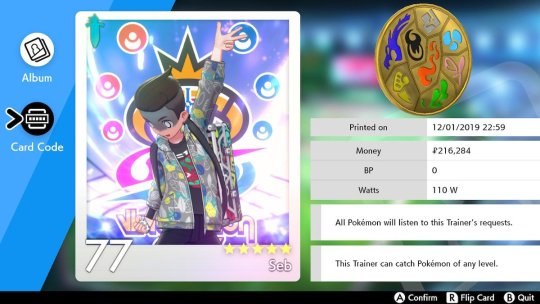
10. Pokemon Sword It's that classic Pokemon formula only streamlined to take merely half the time(and half the Pokemon oops!!) In all honesty I really enjoyed my time with this game and the fact that it tried to be as tight as possible and didn’t waste your time felt really refreshing. I just wish it had a meatier postgame. I don’t mind the reduced dex but the lack of legendaries to hunt really sucked any wanting to play more out of me after seeing the credits.
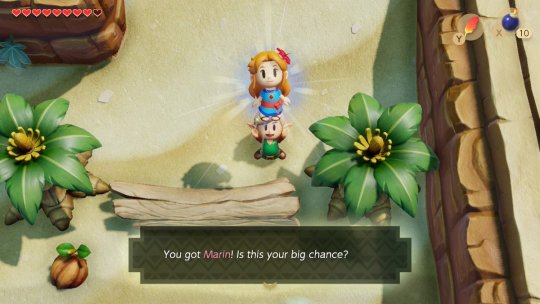
9. Legend of Zelda: Link's Awakening It's that classic weird Zelda game, only prettier and with even better music. The touched and fixes to the gameplay alongside the amazing atmosphere provided by the new graphics and revamped sound track make this the definitive version of a true classic.
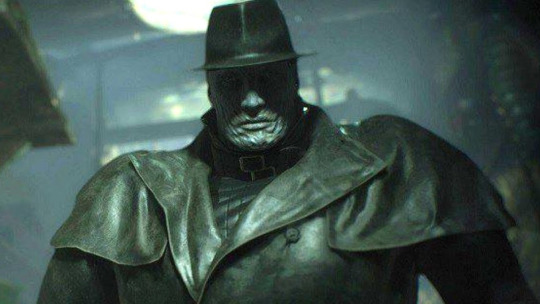
8. Resident Evil 2
Mr X is literally the scariest thing I've had to deal with in a game in years and I twitch uncontrollably whenever i hear loud footsteps heading my way in real life now. I still need to sneak back in and do a second playthrough before RE3make hits next year(????fuck yes????)

7. Devil May Cry 5
It only took like 15 years but we finally got a new genuine Devil May Cry game and its the best one yet??? It capped off a lot of the plot threads from 4 and felt like a complete game with tons of love put into it and I'm so glad Capcom is having this renaissance the past couple of years if this kind of stuff is what we have to look forward to.
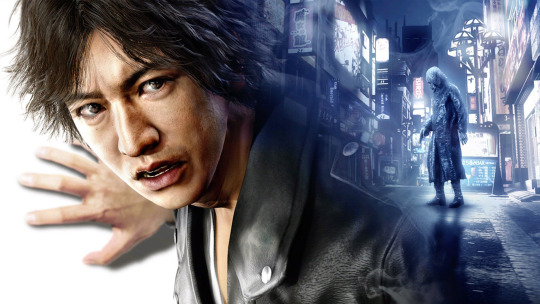
6. Judgement Fantastic spinoff to the Yakuza games, same great setting, amazing new cast of characters. Probably would have been higher on the list if it didn't give me cat noise ptsd from having to find all the hidden cats during investigations.
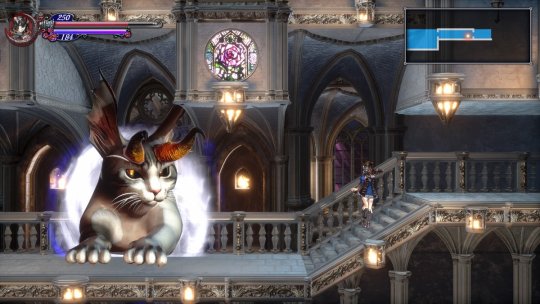
5. Bloodstained: Ritual of the Night Score another win for people getting to revive genres/series they used to be huge players in. Playing this game feels like being pulled right back into the mid 00s and I mean that in the best way possible.
It oozes so much mechanical personality out of every poor, the soundtrack rules and it scratches that 100% completionist itch the way only a true IGAvania can.
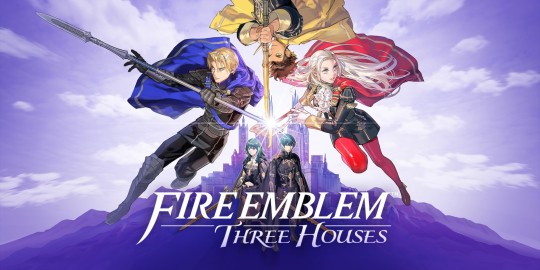
4. Fire Emblem: Three Houses I only played Blue Lions but this is already my favorite fire emblem I've ever played. There's basically not a single character I didn't like and I found the Blue Lions plot to be extremely emotionally gripping and satisfying overall.
The exploration of its themes of ptsd, growing up in war times, racism, classism and all the social struggles that come with these things is second to none when it comes to this series, and I can’t wait to dive back in for another playthrough soon.
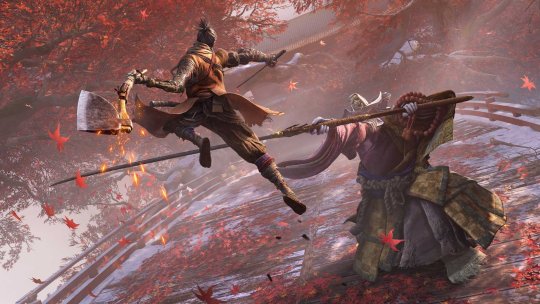
3. Sekiro: Shadows Die Twice This game fucking rules as hard as it is hard. I love From Soft's version of feudal Japan and I really hope they get some dlc or a sequel to flesh some of their ideas out because they are super fascinating.
I try to be very thoughtful about why I like the games I like but man this game is just plain old rad and fun and hard and some guy cuts a portal to hell out of his neck and you fight his super powered grandpa after he climbs out of the portal. It’s a good video game.
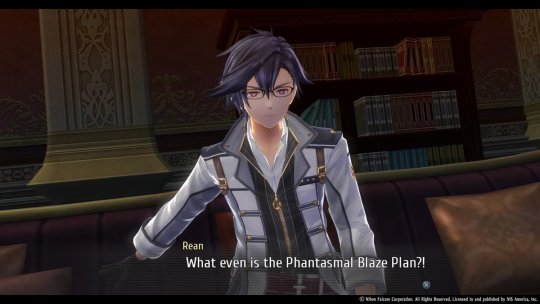
2. Trails of Cold Steel 3 Basically any other year this would have been my go to number one contender. I love this game and this series to bits but i think it spends a little too much time backpedaling on its payoffs in order to keep all the reveals for the final act which, while incredible, is pretty exhausting by the time you get there.
New Class VII are some of my fave characters in the series, Ash and Altina especially. I really loved them pulling back plot threads like Hamel that have been simmering in the background for almost two decades now. The music as always is fucking incredible. By the end of the game it truly feels like the beginning of a culmination for so many years of built up plotlines and then oops it cuts to black.
Well, I guess I’m really looking forward to CS4 then!!
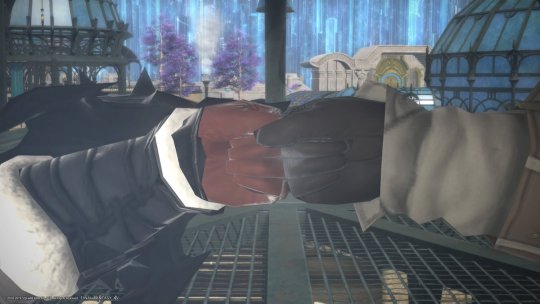
1. Final Fantasy XIV: Shadowbringers I always enjoyed this game in the past mostly as a side game to kill time but the beauty of having a game run this long means that it has just as much time to get you invested in its world and its characters. The fact that this expansion starts by taking all of that away and throwing you and your band of misfit allies into completely uncharted territory, devoid of all resources and external allies, is just the faintest tease at how spectacularly bold this expansion is.
Despite the fact that this game takes place in a whole new world mostly divorced from the main political arcs established so far, it goes maybe the furthest in terms of huge metaplot shattering and affecting reveals. By the end of this game I sympathized and understood the villains of this game in a way I never imagine I would be able to.
The character writing is superb, the menagerie of side characters you’ve come to know over the past three games finally get a chance to shine as they are stranded in the strange alternate universe mirror of the main game. Before this game I liked one or two of the Scions quite a bit but found the rest of the team to be pretty forgettable. By the end of Shadowbringers each and everyone one of them stand as some of my favorites in any jrpg I’ve ever played.
The villain of this expansion is just straight up the best most well written, sympathetic and relate-able foe from any FF game so far. Hell, even outside of Final Fantasy I have trouble thinking of another villain who I shed legit tears for when they finally passed on.
The game’s music is incredible and otherwordly, the changes they made to the classes (that I play) were all rad and Ardbert is my Husband of the Year all Years.
I’ve always played this game pretty casually without massive investment but I'm here for the long haul after this expansion.
1 note
·
View note
Text
GAME REVIEW: The Legend of Zelda- Breath of The Wild
I am kind of hard pressed in finding a good way to start off this review. I mean, I have spent the better half of the past 2 months exploring many of the various locales in Hyrule and trying very hard not to royally screw up, as well as devise ways to make rupees and gain better weapons, what series of sentences could I use to best sum up that kind of commitment to a game?
But then again, maybe I just did right now. I don’t think I could find a proper way to start off a good review without sounding either too fanboyish or pretentious. Also, to be quite fair, many of you who have been noticing certain pics I’ve put up on my Facebook and Tumblr accounts know I’m dedicated to this game. And with good reason, as it seriously is one of the best developed games ever produced for the Zelda series. Now this review is probably gonna take a bit of time for you to slog through, so pull up a chair and relax, this MAY take a while…
Initially made for the Wii-U (the one I will be reviewing here), Breath of the Wild is both the final game developed for the Wii-U and one of the launch games for the new Nintendo Switch. Graphically speaking, it seriously pushes the Wii-U, as you will see as you travel throughout the lands. From the plains of the Great Plateau and Central Hyrule, to the snowfields of the Hebra section and the vast deserts of the Wasteland, there isn’t one real ugly speck of dust out there. Well, maybe with the exception of any areas that is infected with the Malice goop, which I strongly suggest against touching. (Trust me, the stuff is like black slime in Ghostbusters—gets everywhere and is very hard to wash off…)
As the theme of the game is reliant on the nature aspect, it seems almost organic in tone. And many of the other areas that are populated seem to borrow from certain parts of history (the developers said that the inspiration for the art came from the Jomon period of Japanese history. A quick Google search confirmed my curiousity) or are unique in itself, like the Gerudo women and their insertion of their own words for welcoming people and describing men and women respectively. In a way, it’s an interesting approach and gives the world some more personality than you may be used to. It also helps because for the most part, the primary story is simple: Link wakes up after being asleep in the Resurrection Shrine for 100 years and finds out that Ganon, or Calamity Ganon, is about to break out of his prison within Hyrule Castle, so it’s your job to go and kill him (Oh and save Zelda while you’re at it.) The bulk of the plot details are told either through flashbacks, or memories, scattered throughout the game and through journals and interactions with many other NPCs. I can understand why some people may not like the lack of a proper structured story but to be fair, most of the people that Link knew before he was put into sleep are, for lack of a better term, dead. The only handful of people still alive that remember him or personally know Link are either super old or Zora. (They have a RIDICULOUS long life here in the game and it makes a certain side mission a little…ummm…ODD.) I think though that as you make the journey all the stuff you get to do for the people you meet help to keep some semblance of a moving plot. Yeah, the people are aware of a giant Eldritch abomination that is on the loose, but they are preoccupied with other things, like getting married, treasure hunts and getting a picture of a Lynel. (Oh yeah, Lynels…I will get to those fuckers soon enough…)
By now you are probably used to the standard ways that the previous Zelda games have started out, which is a lengthy tutorial section where you learn the ins and out of combat, how the controls work and so forth. Well, not this time. Nintendo really meant it when they said this would not be the standard Zelda game; You start off in the Resurrection Shrine, get the Sheikah Slate, some clothes and a quick briefing on running and climbing, and then…that’s it. You step outside, get a beautiful opening wide shot of the area below and that’s all there is, now go follow that mysterious old man who just noticed you and is walking down the path. You want a weapon? Go find it. The Great Plateau is basically your training ground and you will learn, the HARD WAY I should stress, the ins and outs of combat, when to pick a fight and when not to and just how important it is to horde food. And once you finally get off of the Great Plateau (which itself will take a good chunk of time) the real adventure kicks in.
One of the best things about the original game was the open world aspect, where you have free reign to go out and explore the landscape. This is made very evident here in this game as well. The game is MASSIVE. Seriously. Hyrule here is supposed to be much, much bigger than the world of Skyrim and I will have to take them at their word for it seeing as I’ve yet to play Skyrim. (Yes, shocking I know, give me a break already.) There’s no one way to approach your quest. You COULD, if you wanted to, go and try to take down Ganon right away. I can tell you, after seeing Hyrule Castle later in the game, going straight from The Great Plateau to Hyrule Castle is tantamount to actual suicide. I mean in THEORY you could do it but it would be very hard and you would need to, well, NOT GET HIT. EVER.
Which brings me to the next point: the combat system. It still retains the basic controls, where we have Z targeting and shielding. But there has been quite a few changes. Instead of just a one handed sword, Link can now wield spears, bigger swords, rods and various clubs, boomerangs, halbreds and…a mop. No really, you get to use mops too. But you have to be careful, as durability on various weapons factor in; You could be wailing on a bokoblin horde with a sweet broadsword and then—you get a warning that the weapon will soon break. You are forced to constantly scrounge for weapons, bows and shields as you play. It’s an interesting way to make sure you do not rely too heavily on one weapon AND have the right tool for the right battle, but I would be a liar if I said I didn’t see the disadvantages of this at crucial moments. However, there are a couple of new methods employed now for attack and defense; the flurry, which can be activated if you manage to pull off a perfect dodge and the perfect parry, instrumental in deflecting certain attacks. The latter is very useful in a pinch especially against Guardians. Plus, it’s a good way to reduce wear on the shield. As you play further and further in the game, these skills will become not only second nature, but essential.
The foes you will face are varied too. Each type have their own unique quirks and behaviors, plus they will learn to adapt to your own tactics. If you try to lay a bomb at a bokoblin horde, one of them may have enough insight to kick it back to you. A Moblin may pick up a bokoblin and throw it at you if it lacks a suitable weapon. And then there are Lynels…

Yeah those bastards.
I do not know precisely WHY they made these one of the toughest things to fight in the game. But they are for some godforsaken reason. The Lynels, Talus, Hynox and Molduga are some of the biggest and, at times, tougher fights waiting for you out in the field. They are risky but worth the rewards they reap when you do kill them. And given that the Blood Moon in this game revives all the guys that you kill off, you will not have a shortage of battles. But if, by any chance, a Blood Moon occurs right AFTER you fight a particularly tough battle, then you’re kind of screwed, especially if you are low on food or weapons. And that’s the beauty of the combat in this game, it is simple in theory but when you actually go out there almost anything can happen. The healing system has also undergone a significant change, as you need now to eat food and elixirs in order to regain health out in battle, as opposed to the old ways of getting hearts. And they actually went out of their way to make the cooking system fun to use. You will experiment with cooking to find not only the best recipes for healing, but for gaining serious strength or defense buffs when you need it the most. Trust me, you will NEED to stock any and all ‘mighty’ ingredients.
Also, as you start to play, you may die. A LOT. Enemies can hit hard so getting the best armor will also be a priority. In previous titles, armor only really slighty changed the damage you could receive but here it is a matter of life and death. Some armor sets have idden benefits that can make exploration and combat easier. It’s also required to survive in other regions. Ever wonder how Link manages to survive being in certain places like volcanos without serious heat damage? In this game, it now is a factor. Whether it’s snow capped mountains or desert landscapes, your choice of clothes and/or elixirs can make a difference. But when it rains it can REALLY slow you down. Lightning storms also really, REALLY suck until you get the Lightning Helm.
Another real huge departure now is the dungeon system, or rather lack of. The game has only 4 main “dungeons”, or Divine Beasts, to go through (and of course, Hyrule Castle) while everything ese is now placed into Shrines hidden throughout the game, which house the Spirit Orbs you need in order to gain Heart Containers or Stamina Wheel expansions, and also weapons and treasure. Some of the Shrines just require a simple puzzle, others require more devious means of entry or survival (fear Guardian Scout IV). And even with the Sheikah Sensor just finding them is a task in itself. (Yeah, lets not even discuss Eventide Island, because that may cause some people to have fits.) It’s an interesting deviation, although some may wish to have a go at a standard Zelda dungeon. That may actually be the best way to describe the final area, Hyrule Castle. It was the only one I felt that seemed more in tune with the traditional Zelda game structure (barring the lack of compass and boss key of course.) The Divine Beast area are an interesting new way to get around this, though.
Now the soundtrack is another area I wanted to go into deeper with. You know how there is always a prevalent theme in the main field as you travel? Well…it’s not here. I mean there is music in the game, but only in certain areas and instances. When it does happen, it can go from nice and quiet to awesome in a second. Unless, of course, you are dealing with a Guardian. One second, you will be in the field, walking around and then that single piano chord plays and OH FUCK WHERE IS THAT RED LIGHT COMING FROM?!!!
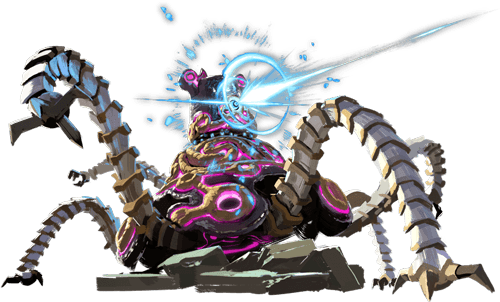
There are actually quite a few musical nods to previous games (Like the Death Mountain area) along with many, MANY references to past Zelda lore. Certain islands and regions, for example, are named after many characters. You can even, if you have the right Amiibo, get gear related to past LOZ titles, such as tunics, swords, bows and even Epona herself (and Wolf Link, if you bought Twilight Princess). The side quest and other numerous things you can do are also here to help you out and keep you busy. Want more weapons or shields? Go look for Koroks! They can be almost anywhere and getting their seeds helps you to expand your inventory. (I wouldn’t go out of my way to collect all 900 of them though. Yes, you read right, 900. Just stop at 400) You can also take pictures to fill up the Hyrule Compendium, shield surf down slopes, go horseback riding, tackle an obstacle course or two, ride a fucking bear into battle—
No I did not make an error there. You can ride many different animals aside from horses. You can ride deers, elks, a moose, an undead horse, the King of The Mountains and even a bear...while it's ON FIRE.
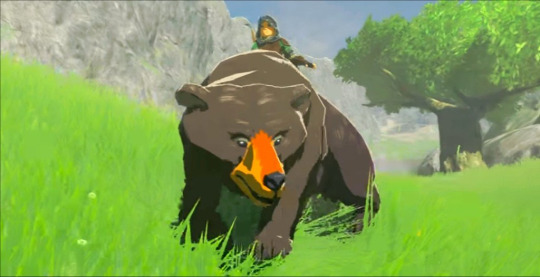
…lets face it, this is the LEAST badass thing you will do at this point. There ‘s a LOT to do in this game. You can take your time or you could speed through it, your choice. But yeah, I’d take my time to enjoy this.
If I had to gripe about anything, it’s just this; the boss battles may be a little underwhelming. It depends though; I mean if you have the Master Sword with you when you take on any of the bosses in the Divine Beasts and Hyrule Castle then yeah, it can be quick. (Especially if you also get Ancient Arrows to even the odds.) And the final battle…I rather not give away too much, but my only reason for getting through that is the fact that at that point in the game, I had experienced so many other types of fights that when it was time to face Ganon, I pretty much knew what the hell to do at the right time, plus I had the Master Sword and beat all of the Divine Beasts first. Also, as many have said, I think the story progression could have been done a little differently.
I wanna say that this is a complete assessment of everything this game has to offer, but it’s not as we have DLC coming later, which will add some new costumes, a Hard Mode (because apparently this game was taking it easy on us) and a new story that will be added in the fall. But from what I have played now, I can most definitely say this is one of the best games ever made, period. If you have a Wii-U this is a no brainer you get this game. If you have a Switch, yeah ditto, but make sure you charge up that bad boy because you will be playing this. A LOT.
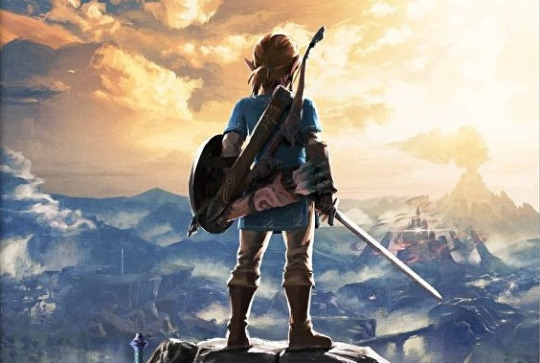
5 notes
·
View notes
Text
Rewards: How Breath of the Wild Fails at Incentives

I will admit up front that some of the things I don’t like about The Legend of Zelda: Breath of the Wild aren’t issues with the game itself. There is something inherently unrewarding to me about open world games that, naturally, this title shares with other games of its style. That isn’t completely the fault of the game’s design, nor the implementation of the tropes that go along with open world games. Open world games just aren’t really very interesting. For all there is to see and do, the understanding that nearly all of it is inconsequential makes the incentive to go uncover it disappear. While Breath of the Wild offers a lot more in the moment to moment action than other similar titles, it still suffers from this basic flaw. Because it’s a Zelda title, that flaw is both more pronounced and more problematic.
Just to get this out of the way, the game is too big. The common concept of value with regard to video games is amount of content, which can roughly translate into how much total time a player might spend playing. Open world games take this simplistic formula to the extreme, cramming in more side quests, collectibles, and places to visit than are required to reach the end game in an effort to make players feel that the money they spent was worth it. In a game with no story or particular goal in mind, say, Minecraft, for example, more often does translate into more. The larger your world, the more players can uncover as they go about experiencing the world. When you have a game like Breath of the Wild, which has a fairly concise and urgent story it wants to tell, there’s no way to make such a huge world fit into that story. There is also the issue of diminishing returns. With so many things to explore and find, the value of each find begins to drop. Finding a piece of opal can only be exciting so many times before the player either doesn’t need anything from them or no longer remembers what they can be used for. There’s an underlying lack of payoff in a world overflowing with stuff.
There are three major types of rewards the player receives for exploring the overworld: towers, shrines and collectibles. In terms of incentives, towers provide a reasonable reward to encourage players to find and activate them. They allow Link to obtain more detailed information on the map about the region the tower resides in, for one. They also give the player a good view of the surrounding area and provide platforms from which one can parasail Link down into otherwise difficult to reach areas. As an added benefit, they allow for fast travel between areas. Most of the towers are easy to get to and scale, but a few have environmental challenges that must be overcome in order to activate them. Even without the map information being filled in, the ability to fast travel or glide to nearby areas makes towers valuable. There is one major problem with fast travel being tied to towers, however, which is that it isn’t exclusive to them, sadly cutting off their usefulness by as much as a third for many of them.

(If you want to fill all that in, you’re going to be climbing a lot of towers.)
The second reward for exploration are the shrines. The shrines are self contained puzzle palaces that test the player’s skill with particular items, concepts, or combat. Shrines unlock fast travel similar to towers, but the main draw of the shrines is that they contain unique items that can be retrieved as well as Spirit Orbs. Spirit Orbs allow Link to gain heart containers or increase his stamina meter by trading in four orbs for each heart or stamina increase. The shrines are where the reward system, so ingrained, in Breath of the Wild really breaks down. Shrines always have a Spirit Orb as their main collectible. Unfortunately, since you need four orbs at a time to upgrade Link, there have to be a lot of shrines to guarantee enough orbs to satisfactorily increase Link’s abilities. This results in the player spending the majority of their time in the game’s overworld looking for shrines.

(Get ready to collect tons of these.)
Knowing what the reward to each shrine is going to be before entering really mutes the excitement of discovering a new one. Nintendo tried to mitigate this somewhat by including treasure chests in the shrines that have unique items, but rarely is the item good enough to justify spending the time figuring out how to access them. The puzzles that would normally make up a dungeon in a Zelda game are instead isolated and sterile. Many are enjoyable, but none last longer than a few minutes. In a weird twist, many of the shrines don’t even feature puzzles, but rather force the player to square off against a robot opponent. These tests of strength are all the same, just scaled up or down in difficulty. It feels as though they were added just in case players never engaged enemies in the overworld (which is something you can pretty much get away with if you want to).
What’s most frustrating about the way the shrines are implemented is that there is an obvious solution to making them more meaningful, one that was pioneered in the very first Zelda game. When you discover a hidden cave in The Legend of Zelda, you don’t know what you’re going to find, but no matter what it is, it’s useful. Some caves contain rupees, useful for buying items while doubling as bow ammunition. Other caves contain NPCs who convey important clues to progression. Some hold heart containers. The dungeons you traverse all have a special item that can be used to make progress somewhere else in the game, like the ladder or flute. Heck, the first cave in the game holds your main weapon, which is possible to miss or ignore. Breath of the Wild could have followed a similar design philosophy, where one shrine might offer you a very good and unique weapon, whereas another might offer a heart container or stamina increase. Not knowing exactly what was hidden inside, yet knowing it would be worth the effort, would have given shrines real purpose and remained somewhat mysterious. Since there is a hard limit on how many heart containers and how much stamina Link can have, it would have meant greatly reducing the number of shrines, certainly, but more care could have been placed on the shrines themselves. They could have been made bigger, more elaborate and interesting. Combined uses of the runes could have been explored more fully. They could have implemented the strengths of more traditional dungeons without forcing players into the hard progression sequences that made A Link to the Past and Ocarina of Time so limiting.
The third reward that weaves its way into practically every aspect of the game is consumable items. Nearly everything in Breath of the Wild acts as a consumable. Fruit, arrows, monster parts, rupees, the Spirit Orbs, even weapons. Consumables are a tricky thing to get right in games. Drop too many of them and a game can become a cake walk. Drop too few and players will get frustrated that they can’t simply get something they need in order to allow them to make progress. Breath of the Wild actually manages to find a middle ground with this, but in a way that takes away the point of looking for items in the first place. The issue at hand is that all items must be replaceable. There are a few exceptions to this, such as the Master Sword (which is the only weapon that can’t break), but everything else either goes away when you use it or breaks down with use.
Since so much of the game has a shelf life, it can’t very well give out items that players would find too valuable to use. During my playthrough, I found myself hanging onto weapons that were a bit better than the usual stock I could get by defeating local enemies. That, of course, put a crunch on my inventory space, which forced me into decisions on which weapons to keep and which to use more often or discard. This was an interesting proposal at first, until I realized that none of the weapons were really worth worrying about as the amount of damage I could do didn’t increase or decrease dramatically enough to make much difference. So long as I wasn’t running around using a tree branch as my main weapon, I’d be able to take care of the overworld enemies just fine. This realization really sucked out the desire for me to fight enemies for more weapons, or scour the shrines for chests that might contain better weapons. Once I received the Master Sword, I forgot about other weapons almost entirely.

(Whatever it is, I don’t need it.)
The Master Sword, itself, is an interesting case, as it stands in such stark contrast to the way the rest of the weapons in the game work. Obviously, Nintendo couldn’t let the Master Sword be destroyed. All it would take is an absent minded player whacking away at some rocks and watching the most iconic piece of the Zelda mythos splinter into pieces before they got angry calls. Instead, they placed an arbitrary use limit on it so that it would power down for a while, similar to the way the special abilities earned from the beating the Divine Beasts work. This was a very poor compromise to make. While getting the Master Sword isn’t a herculean feat by any stretch, there should be some real reward for going through the effort of getting it. Sure, having a strong, unbreakable weapon might have made the game a bit too easy, but the amount of time spent in the game needed to get the Master Sword would have made this a trivial concern. Players who found the weapon too powerful could always opt not to sue it. The result is the inclusion of a weapon that has no practical purpose, which feels underwhelming at best, and a bit of a broken promise at worst.
The consumable nature of the game also means that Breath of the Wild has to assume that players might not have any items that weren’t forced upon them. To Nintendo’s credit, they did manage to get a lot of positives out of this dilemma. While the puzzles that litter the game aren’t very deep or involved, there are often a few ways to solve them. This was a necessity, of course, since players could very easily have gotten stuck at various points without having the right equipment and not knowing what to look for to solve the problem they were facing. Part of the joy of this game was in examining the tools at your disposal, then figuring out how you might combine them to achieve your goal. This is great for a little while, but soon gets repetitive, as it almost always boils down to using one of your four major runes: the Remote Bomb, Cryonis, Magnesis, or Stasis. Since the game couldn’t count on players having particular equipment at any given time, puzzles revolve either around things placed in the environment itself, or utilizing one of the four abilities granted to them by the Runes that the story guides you toward finding. Any less obvious methods for solving puzzles are done either because a player feels particularly playful or the puzzles are so straightforward that they become boring to solve using the intended method.
So what we’re left with in Breath of the Wild is a huge world filled to the brim with content that simply doesn’t matter. Very little in the game matters, ultimately. So little, in fact, that nearly everything past the introduction sequence can be skipped entirely. While there are a minimum number of bosses that need to be fought to beat the game, you can do so simply by storming Hyrule Castle and boss rushing them all at once. Sure, it’s a real challenge to do that without considerable familiarity with some of the more intricate combat mechanics, but once competence has been achieved, it’s hard to justify spending any time doing anything but going straight to the end game once players know it can be done.

(To be fair, the flurry rush is a pretty satisfying move.)
The upside to the majority of Breath of the Wild being made up of filler is that it has spawned a pretty fervent speedrunning community. Zelda games are no strangers to speedrunning, but the enthusiasm with which Breath of the Wild has been met by speedrunners makes me think some of that has to do with the fact that the game, on its own, doesn’t have much to offer. Instead, many players have taken to exploring the game on their own terms, trying to shortcut their way to the end as fast as possible in the hopes that such an experience would provide the reward the game, itself, could not provide.
I had hope that the story of the game would be enough to tie it all together, or at least give me a reason to care about why I was playing. Sadly, the implementation of the story is, perhaps, its greatest downfall. There isn’t much story to speak of, but in contrast with every other title in the series, Nintendo felt compelled to give this story voice. It would be easy to criticize the English language actors for the game’s cringe-worthy bad voice work, but the material is just as dreadful. Every spoken line is a cliche, and when it’s combined with the obvious fake voices being put on to match the characters, the whole thing feels disingenuous. Perhaps it’s a bit of an unfair criticism, but since there were no other language options to choose from, I had no choice but to skip over the cutscenes in order to spare myself hearing the labored work of the actors.
Along the same letdown, I was surprised by the lack of memorable music in the game. For a series with so many iconic themes at its disposal, Breath of the Wild contains none of them. That alone wouldn’t matter, as one can hear the Ocarina of Time score only so many times before it loses its magic. Upon finishing the game, only one tune remains in my mind: the horse stable melody. Part of the problem is that the score is adaptive. There’s a piece that plays when Link comes in close proximity to an enemy, there is a different song that plays in towns or when rock monsters form from the earth. None of them feel like themes, though, nor do they behave much like themes since they fit so many different places and situations. The music feels consumable much in the way weapons do. As such, the score is utterly forgettable and would have played just as well entirely without one.
While my overall impression of the game is unfavorable, it would be dishonest not to mention that while I was playing the game, I had fun. Moment to moment, there was quite a bit to keep me occupied. It was nice to see the return of Lynels to the franchise, for instance. The environments, devoid of meaningful content as they might be, were enjoyable to look at, walk around in, be in. There was a distinctive and enjoyable art style that worked in many ways the way the Wind Waker’s aesthetics did. Being a cross platform game between the Nintendo Switch and Wii U meant sacrifices had to be made, but those limitations only made the overall look of the world better. Sure, the Wii U version frequently had frame drops in the single digits, but those still shots looked great. There’s something incredibly charming about Breath of the Wild that makes me recognize that in spite of its deeply rooted flaws, it’s a pretty good game. Like Super Mario 64 before it, Nintendo proved that personality can be 9/10ths of a game. While I do think Breath of the Wild will see a similar retroactive re-evaluation along the lines of Skyward Sword, I certainly can’t begrudge anyone who loves the game now and forever. I sure enjoyed it while I was playing.
2 notes
·
View notes